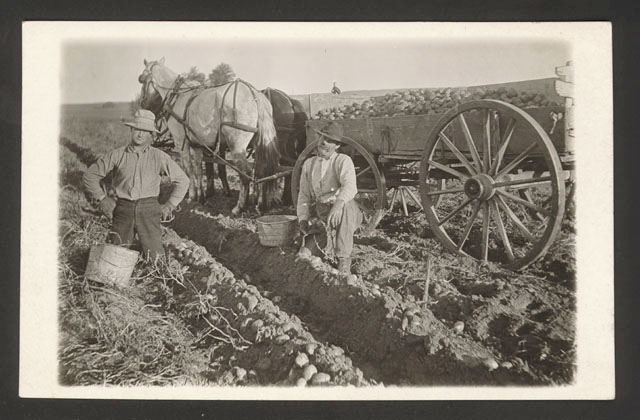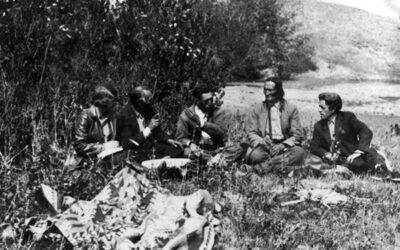With the sole exception of grasshoppers, perhaps the most hated insects to afflict the pioneer farmer were potato bugs. So prevalent were they at one time in Nebraska that one of the state’s early nicknames, the “Bug Eaters,” was said to refer partly to them. According to John A. MacMurphy, secretary of the Nebraska Territorial Pioneers Association, writing in November 1894, an easterner came to Nebraska to visit relatives during the lean years of the 1870s and on his return home, was asked about conditions here. According to MacMurphy’s account, the man responded, “Oh, everything is gone up there. The grasshoppers have eaten the grain up, the potato bugs ate the ‘taters all up, and now the inhabitants are eating the bugs to keep alive.”
Complaints about potato bugs abound in early diaries, letters, reminiscences, and newspaper accounts on file at the Nebraska State Historical Society. Mollie Dorsey Sanford noted in her diary from 1867: “About the only employment we have now [during summer] outside our housework is to help destroy the potato bugs that are eating up the vines.” Royal Buck, an early Red Willow County settler, described his problems with potato bugs in a July 1, 1872, letter to the Nebraska City News. The bug, he said, “gathers upon the vines and strips them of their leaves at a fearful rate. An acre of potatoes is attacked and in one or two days completely ruined. We have no drug stores where we can get ‘bug poison.’ We have to fight or let our vegetables go. I am going to fight awhile at least.”
Some pioneer farmers and gardeners fought back with poison (if available). A favorite poison for the purpose was Paris green, an extremely toxic blue-green chemical. The Omaha Daily Bee on June 9, 1891, called it “the cheapest ammunition for the purpose,” but cautioned that “great care should be used in storing, handling, etc., in order to avoid personal injury.”
Inventors and agricultural experts tried to find other solutions to the potato bug problem, but handpicking the insects from the vines remained the most effective (and least dangerous) method of control, much to the disgust of children assigned this task in family gardens. The Columbus Journal of March 26, 1902, reported that a Kansas man was said to have scammed thousands eager for a miracle remedy for potato bugs.
“This fellow advertised a sure potato bug exterminator. He inserted the advertisement in all the farm and country magazines and journals, offering to send his exterminator for $1. He received dollars by the thousands. What he sent them was a little package containing two small, square blocks of wood, marked ‘No. 1’ and ‘No. 2.’ The printed directions that went with the blocks read something like this: ‘Hold block No. 1 in the fingers of the left hand, the smooth surface up. Place the potato bug upon the smooth surface. Grasp block No. 2 firmly between the index finger and the thumb of the right hand and bring it down sharply on the back of the bug. This device has never failed to exterminate the bug.'”

John Nelson’s photograph depicted two men harvesting potatoes about 1907-1917. RG3542-134-10



